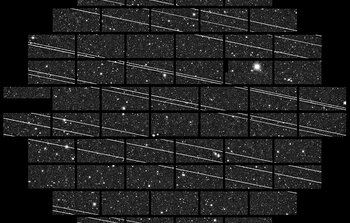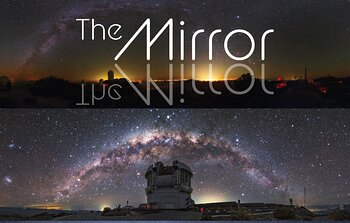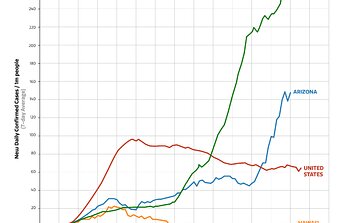When Comet NEOWISE (C/2020 F3) sped through the inner Solar System during the middle of 2020, astronomers and the general public watched in awe as this “dirty snowball” shed gas and dust into space, producing a striking show visible to the naked eye. Close-up observations, led by Michal Drahus and Piotr Guzik of Jagiellonian University in Krakow, used the international Gemini Observatory, a Program of NSF’s NOIRLab, to observe the materials escaping from the comet over time. One set of observations, obtained on 1 August 2020 from the Gemini North telescope on Hawai‘i’s Maunakea, displays a spiraling stream of molecular gas that reveals the rotation of the comet’s nucleus. The timelapse sequence, compressed to only a few seconds, represents about one fifth of the approximately 7.5-hour rotation period of the comet.
The release, images and videos are available on:
https://www.noirlab.edu/public/news/noirlab2021/
Kind regards,
NOIRLab Information Centre
Aug. 24, 2020

|
21 Aug. 2020 - ann20011
On Tuesday 25 August, astronomers will release the final report from the Satellite Constellations 1 workshop during a virtual press conference hosted by the National Science Foundation’s NOIRLab and ...
|
| Read more |

|
23 June 2020 - ann20009
The inaugural edition of The NOIRLab Mirror is now available. Our new, twice-yearly newsletter with information focusing on NOIRLab’s user communities showcases the science, technology, and program developments across the ...
|
| Read more |

|
11 June 2020 - ann20008
Following is an update on the impact of the COVID-19 virus on NSF’s NOIRLab.
Since the night of Tuesday, 19 May 2020, the Gemini North telescope has been conducting observations ...
|
| Read more |

|
9 June 2020 - ann20007
#ShutDownSTEM, Wednesday 10 June 2020, is a day of international protest of systemic racism in research and academia. STEM and research professionals are asked to stop their normal activities of ...
|
| Read more |
|
|
|
|